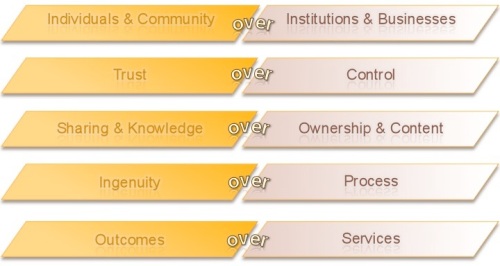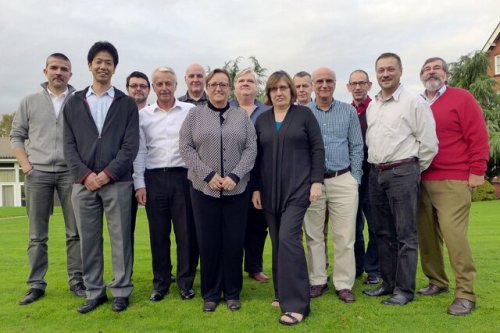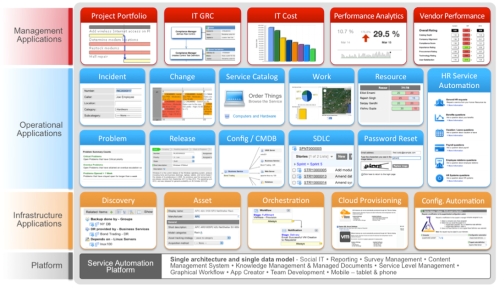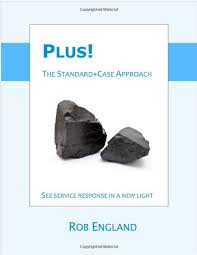Here are my nominations for this year’s Service Management Champs:
Charles the Champion of Change Communities
From RevNet to the SM inaugural Congress
Sound quality improves in this short clip
“We are uncovering ways of meeting business needs through Service Management. Our achievements, experiences and insights compel us to adopt these values:
While there is value to the items on the right, we value the items on the left more:”.
Dancy the Disruptor
“TFT13, Tomorrow’s Future Today, is the world’s first 24-hour, global, follow-the-sun virtual conference. It has a size and level of innovation that has never been seen before”.
Mark Kawasaki – The Practitioner’s Road
Long video clip so worth coming back to.
“What I finally see clearly is this: I belong on the practitioner’s road. And my purpose here is different than most. I don’t want to help design a better automobile. I want public transportation”. http://www.windupbird.org/
Stuart the Strategic Service Management Steward
itSMFUK – Outstanding contribution to ITSM
I am not sure that Axelos would have moved forward or maintained momentum without his contribution to the Taking Service Forward Initiative.
The vision of Taking Service Forward is to provide the service community with an Adaptive Service Model. Link to Google+ community LINK
Barclay Broadcasts everywhere.
Barclay has popped up at forums and events across the globe and as a result his personal brand has grown significantly this year across the industry.
He readily shares his insights e.g. ITSMTV etc. however I have selected this clip to shine the Rae from ITSM Goodness to SIaM
Frank and Fred Forge Ahead to the Beginning of Now
Service Now is the world’s second largest SaaS product (Salesforce is #1)
ServiceNow is built on a proprietary platform that aims to automate and standardise business processes, becoming the enterprise-wide platform across IT and business operations.
In addition to capabilities for service management, additional capabilities have been built for HR Service Automation, customer relationship management and facilities management.
Tools alone will not deliver the solution to Business Issues. Whilst I recognise how easy it is to create apps I am not sure whether clients would purchase ServiceNow HR Service Automation over Workday, Peoplesoft HCM or SAP HR solutions.
Stroud the Smoothie
Robert has the ability to travel seamlessly across the islands of COBIT5, ITIL and Vendor (CA) communities.
Here is his provocative 5 min presentation at Leadit 13
If 90% of everything is crap then 90% of the way that you are doing Service Management is crap so you must find the 10% of process that really works.
How are you going to unlock value for the future?
Rob Remains Relentless
Rob England is Relentless in his specific / point challenges to others in the SM ecosystem, in particular Axelos. In 2013 he has come out of the shadows and written a well received book and presented at various forums.
“Rob England’s latest book Plus! The Standard+Case Approach, does in one short reading what many books attempt to accomplish in several years. S+C redefines the relationship for technology professionals by creating a route to customer experience, an improved skillset for ICT and redefines everything we thought we understood about “routine”. Chris Dancy, Founder, ServiceSphere Amazon LINK
BrightTALK – Grow Your Audience in 2014
BrightTALK is the “Best of the Best” platform in the eyes of practitioners and has organised many Summits where individuals readily share their insights.
It is important to understand that we can learn as much from the CHUMPS as we can from the Champs:
Axelos a Forward-Thinking Name for a Forward-Thinking Company
Not sure which design agency was chosen but good luck if you ever need to re-brand ITIL. Moreover, the change in logo from the Best Practice Management Swirl to the Axelos GBP (Global Best Practice) is the only visible change I have seen.
Perhaps there will be more forward thinking with the launch of the Axelos website.
Peter Hepworth the Axelos CEO portrays the image of either Tim Nice but Dim or a Gifted Amateur. He has been leading the global Axelos “Dog & Pony (Road) Show” and his lack of Industry, Product or content Knowledge is evident. This is in stark contrast to industry leaders such as Frank Slootman the ServiceNow CEO.
Here is one of his better performances which reflects a steady improvement in his canned speech notes. I suspect that he is more comfortable banging on about Gamification.
ITIL – Product Development Roadmap Priorities – LINK
“We are seeking to capture the most imperative propositions that will help identify the real value of our portfolio of products. We will be asking our ecosystem to support this process with case studies and real life examples as to the quantifiable benefits. We will share a series of propositions, in the form of short briefs for CEOs, at the end of the year and ask for your support with their continual development”.
“Research shows that gaming and simulation can improve the learning process. We will therefore explore this opportunity and work with specific strategic partners to ensure that our products are at the forefront of the digital age in terms of development and delivery”.
Axelos receive royalties from Examination Institutes for each ITIL exam taken. This recurring training revenue stream is the “Gift that keeps on Giving” and will guarantee Axelos employees a share of profits at end of 2014. Metrics drive behaviours so Axelos will shine the lens on Gamification and e-Learning to drive increased revenues.
An early example of generating additional training revenue is the “Official AXELOS ITIL Foundation Exam App” which was available on iTunes for download at £9.99 / $16
Chris Barrett the Axelos Transitions Director
Chris is much more credible however given that we are two weeks from launch date it is very disappointing that the Roadmap is still very high-level and mapped out by quarter. I suspect that if Chris were still a “Big-Time” consultant he would have been walked off the engagement because the high level view and workstream descriptions are not detailed enough to provide transparency of initiative priorities, deployment plans etc for the Programme Sponsor. One of the key deliverables is the Axelos Community Portal which will be available at the end of Q3 2014.
The Axelos Service Management Architecture workstream is 10 years behind most big-time and independent consultants who have helped their Local / Global clients with the design and implementation of proven IT Operating Models and End-to-End Service Models.
In 2014 there will be increased focus on how Cloud Services Brokerages will Challenge Traditional IT Service Providers for Cloud Services Delivery.
Another trend this year is where Industry stalwarts have been less opinionated. Stephen Mann transferred, after many years, from Forrester to ServiceNow. He has been consistently involved in the key community forums but for me is recording and observing rather than when he was at Forrester providing a thought provoking Point of View.
More worryingly Ken Gonzalez and Ian Clayton have changed their tone and been less vocal since they joined the G2G3 Americas team. G2G3 is part of the C(r)apita Group.
The Service Management ecosystem will continue to fence with more frequent and aggressive “Thrust and Parry response” moves, fighting with either foil or sabre. The natural tension between Profit (Axelos), Non-Profit (ISACA), Vendors and Customers will increase in 2014 with the lines blurring between who sits Inside the tent or Outside the tent.
Why do we need to be more relevant to our Consumer/Enterprise Customers?
The proportion of the global workforce dedicated to agriculture, products and services has changed dramatically and at a faster pace over the last 20 years:
In 2014 the principles of Service Management will be applied beyond Enterprise IT to predictably deliver outcomes for Consumer and Enterprise Customers. Lessons will be applied from Business Process Outsourcing and Operational Excellence. There will be a huge focus on moving from the Service Experience to Customer Experience with clear definition and measurement or outcome based Key Performance Indicators.
In 2014 we will officially be planning for the post ITIL environment. ITIL = Irrelevant Today Industry Leading Not
Axelos has consistently mentioned investment in products and the value proposition for CEOs. Whilst new idea generation is part of the equation in 2014 execution is just as important. I envisage that Axelos will pander to the needs of the Pupil over Practitioners and will reap what they sow.
Moreover, Axelos has not defined the criteria by which any artefact will be categorised as “Global” Best Practice.
In 2014 Standards of Service Excellence will be set and validated by the global self-organizing community.
So in 2014 we will see the pooling of collective wisdom and increasing power of individual practitioners to share their insight with whoever is interested across any channel of interaction.
In 2014 it is important that we encourage any new or different thinking. TFT13 was a huge success. The submissions for TFT14 in February will require careful review in order to maintain the standards of excellence and meet the viewers expectations.
So who will take the
Service Management “Moral High Ground” in 2014?
The 2014 champions will be the individual practitioners who have delivered outcomes that address real business challenges. They will readily share proven solutions to business issues via platforms such as Google Helpouts. Those seeking help may opt to pay a sum they think the practical advice is worth.
In 2014 creativity will come from spontaneity, from random connections, from cross-pollination and easy sharing of ideas. A new cadre of “Opinion Formers” will take the global stage. There are no lines to be learned and the members of the cast will extend beyond the “same old same old” set of champions. As we Shift Right new voices from India, Singapore, Philippines etc. will join the dialogue. To this end keep an eye on the folk at HCL.
My related posts:
Is TFT13, not the ITIL joint venture, the way forward for IT Service Management Practices? LINK
ServiceNow NowForum with presentations from CEO Frank Slootman and CTO Fred Luddy. LINK
Gartner Says Get Gamification working for you LINK
Gartner research note sets out how the Cloud Services Brokerage market will grow LINK
Are you invited to join the Google Helpouts marketplace? LINK



























